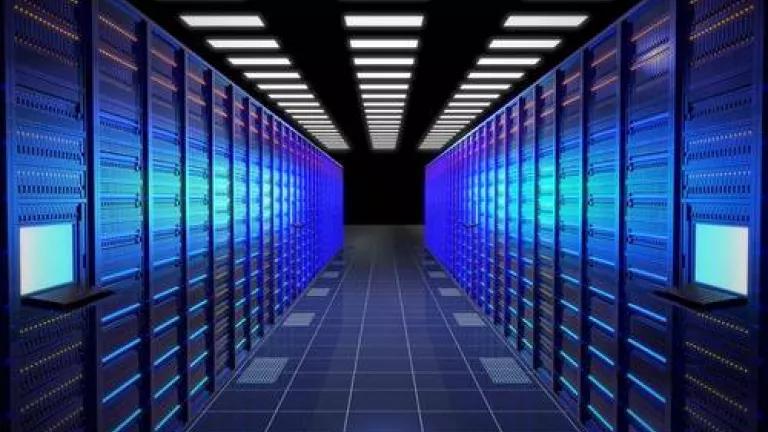
New research confirms that "comatose" (aka "zombie") computer servers are wasting vast amounts of energy in the United States and around the world, with possibly as many as 10 million servers sitting idle globally but still powered on and gobbling energy even though they haven't delivered any information or computing services for six months or more.
That means at least $30 billion in server capital (the financial investment in these zombie servers) is sitting idle worldwide.
The new data supports NRDC's 2014 analysis, conducted in partnership with Anthesis, that up to one-third of the servers in America's data centers are comatose and no longer needed to deliver such online activity as email, social media, and conducting business. The new findings indicate that as many as 3.6 million of the nation's 12 million servers housed in businesses and organizations are in effect abandoned by application owners and users but are still racked and running 24/7 because no one knows they're unused, or wants to take the risk to switch them off.
The just-released study was conducted by Jonathan Koomey, a research fellow at Stanford University, and Jon Taylor, a partner at Anthesis Group. Data for the study was compiled by TSO Logic, a leading provider of IT efficiency software for data centers, based on a pool of nearly 4,000 servers sampled.
Anthesis Consulting Group published the recent analysis and noted that according to McKinsey and Co., servers in business and enterprise data centers generally use no more than 6 percent of their maximum computing capacity over the course of a year.
Business and government pay far too little attention to this ongoing energy waste, which exacts appalling costs to the environment, including carbon pollution, as well as billions of dollars in unnecessary costs.
"Out of sight, out of mind"
The new study adds weight to conclusions published by NRDC in August 2014 showing that while well-known Internet giants like Apple, Google and Facebook pride themselves on the ultra-high energy efficiency of their data centers, many smaller operators still waste much of the energy they buy. In fact, the enormous server farms that are the nuts and bolts of the cloud are responsible for less than 5 percent of the data center energy consumption in the United States.
A big part of the problem is "out of sight, out of mind." Many small and mid-sized organizations keep their computer servers tucked away in a closet or storeroom, where, unless they malfunction, managers have little reason to concern themselves with server energy use. That's true as well of many multi-tenant data centers -- which make IT (information technology) facility and computing services available to other organizations for a fee.
A server is typically a computer hosting applications in a network environment and sharing information with other computers. Common examples are database servers, file servers, mail servers and print servers. A data center is a facility used to house servers and associated data storage and networking devices.
In 2013, U.S. data centers consumed an estimated 91 billion kilowatt-hours (kWh) of electricity. That's enough electricity to power all the households in New York City twice over for a year. And that figure is projected to increase to 140 billion kWh by 2020, emitting 150 billion tons of carbon pollution annually.
"Data centers often have excess server capacity because identifying unused or over-provisioned hardware with certainty is difficult with conventional tools," Koomey and Taylor write. The study suggests that analysis of user demand and traffic could identify "IT resources not doing any useful work so they can be decommissioned without adding any risk to the business."
Big savings possible
If just half the technical savings potential for data center efficiency NRDC has identified were realized, electricity consumption in U.S. data centers could be cut by as much as 40 percent, saving businesses and their customers $3.8 billion a year.
The good news, according to the study authors, is the needed changes are not primarily technical, but revolve instead around better IT management practices, information flows and incentives.
Koomey says, "Removing idle servers would result in gigawatt-scale reductions in global IT load, the displaced power use from which could support new IT loads that actually deliver business value. That's a result that everyone should cheer."
For IT managers who want to tackle this wasteful practice by removing zombie servers, the study points to online calculators that can quantify the potential efficiency improvement in data centers. They are available from the Uptime Institute and from TSO Logic.
